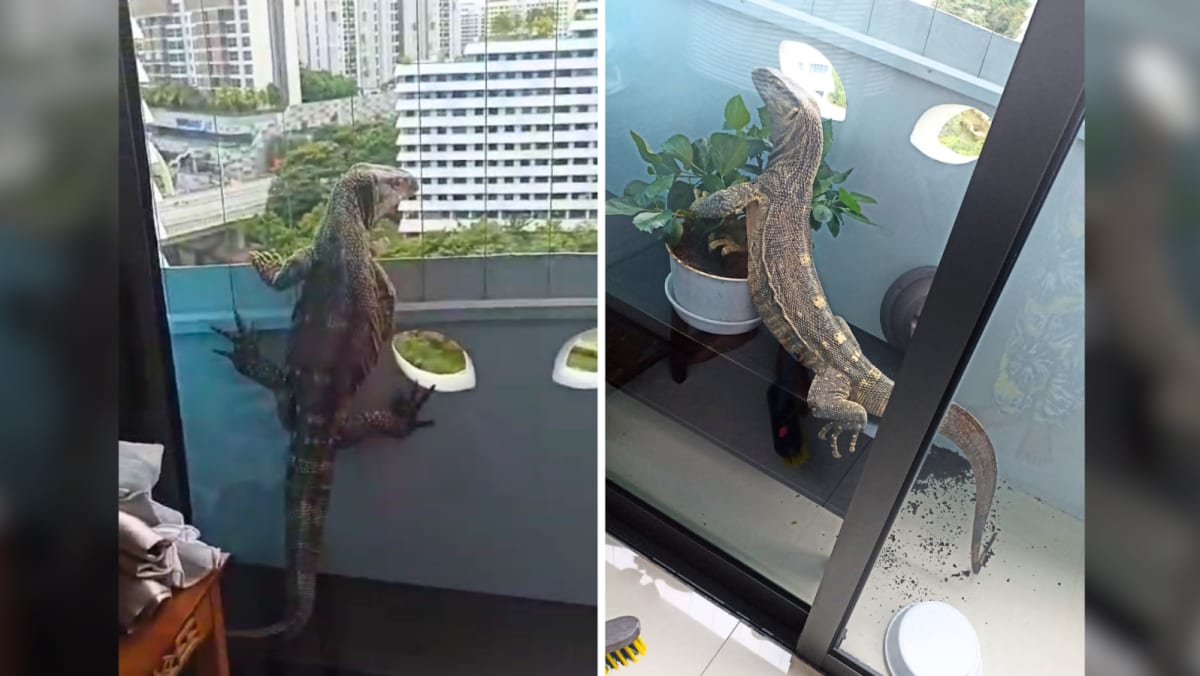KEEPING MONITOR LIZARDS AS PETS ILLEGAL, DANGEROUS
Mr Kannan Raja, president of the Herpetological Society of Singapore, said Rock Monitors are generally large animals.
“Being a Rock Monitor, which is clearly not native, this animal would not have ended up here by itself,” he said.
“So this is probably part of the illegal pet trade. So it could have been an escaped or abandoned pet. As such, it’s used to humans and maybe that’s why it was quite comfortable within a home or near the people.
“It only started moving a little when people got too close to it.So it’s used to people, hence it was quite calm.”
Mr Kannan, whose society is involved in the study and conservation of reptiles and amphibians, said even though the monitor lizard can climb, “you wouldn’t see a monitor lizard climbing straight up 11 storeys” from the ground.
“Even if food was present, they might climb for short distances,” he noted.
He added that keeping monitor lizards as pets is not only illegal, it can also be dangerous.
Compared to ordinary pets like cats or dogs, these reptiles have more teeth and larger claws, and “kind of eat what they can get their jaws around”. Some species even carry venom.
“They have very good defence mechanisms,” said Mr Kannan. “So if you do stress them or if you get too near, you could receive a bad bite or a scratch.”
Non-native animals can also harm Singapore’s biodiversity.
“They will start competing for food and mates and when that happens, if our native reptiles cannot stand their own, if they are smaller, or if they feel threatened, they may actually move away to different areas and you will end up seeing this non-native animal becoming more dominantly seen as compared to our native reptiles,” said Mr Kannan.
“It has happened before in other countries as well, where sometimes the native reptile can even go extinct because of this non-native animal’s presence and pressure.”







